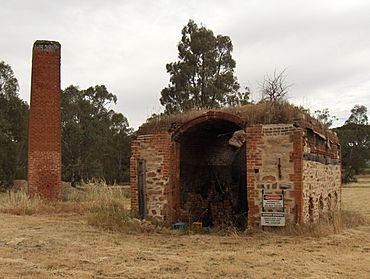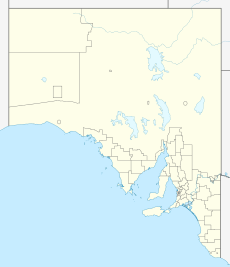Armagh, South Australia facts for kids
Quick facts for kids ArmaghSouth Australia |
|||||||||||||||
|---|---|---|---|---|---|---|---|---|---|---|---|---|---|---|---|

The old disused kiln and chimney
|
|||||||||||||||
| Established | 1850 | ||||||||||||||
| Postcode(s) | 5453 | ||||||||||||||
| Location | |||||||||||||||
| LGA(s) | District Council of Clare and Gilbert Valleys | ||||||||||||||
| Region | Mid North | ||||||||||||||
| State electorate(s) | Frome | ||||||||||||||
| Federal Division(s) | Grey | ||||||||||||||
|
|||||||||||||||
Armagh is a small, historic village located in the western part of the Clare Valley in South Australia. It is about 137 kilometers (or 85 miles) north of Adelaide, the state capital.
Contents
Armagh's Early Days
Armagh was named after a town and county in Ireland. The village was founded in 1850. This was because a new copper mine was opening nearby at Emu Flat. The Royal Mining Company ran this mine.
The Copper Mining Boom
At that time, there was a big excitement about finding copper in South Australia. Large amounts of copper had been found in places like Burra and Kapunda. This made people hope for more success. The mine near Armagh was part of this "copper fever."
A Mine That Didn't Quite Shine
Even though people tried to mine copper in Armagh until 1910, the mine was never very successful. It did not make much money. So, the dream of a booming mining town didn't fully come true for Armagh.
Armagh Today
Today, the hills around Armagh are famous for different things. They are well-known for making delicious wine and high-quality olive oil. These products are now a big part of the area's economy.
What's Left of the Old Town?
Most of the original buildings from Armagh's early days are gone. However, you can still see some interesting historical parts. There is an old brick kiln, which was used for baking clay. You can also find a claypit, where clay was dug up. A few old houses still stand. The Miner’s Home Hotel is also still there, but it is now a private museum.


